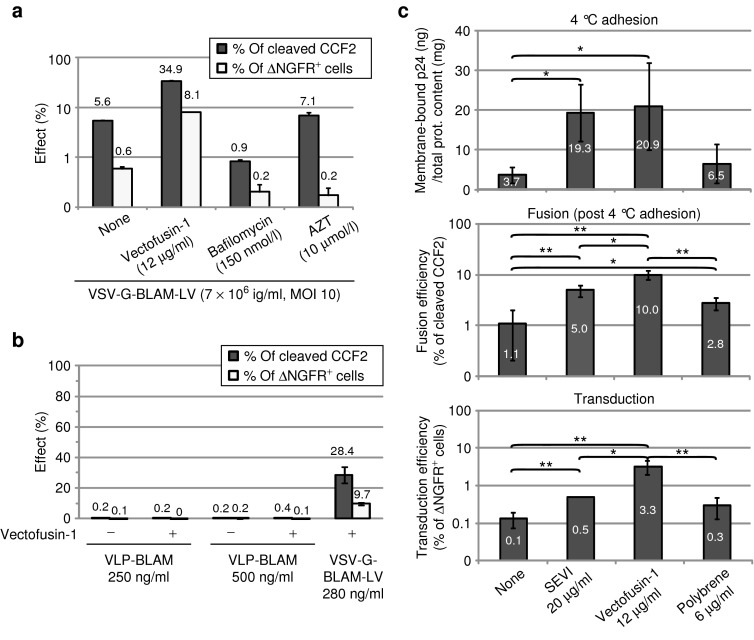Figure 6.
Influence of Vectofusin-1 and other culture additives on the adhesion and fusion step of vesicular stomatitis virus-G-lentiviral vectors (VSV-G-LVs). (a) Viral fusion (percentage of cleaved CCF2) and level of transduction after 9 days (percentage of ΔNGFR+ cells) are represented as the average of duplicates ± SD. Data are representative of two different experiments. (b) Fusion and transduction assay on hCD34+ cells in the presence of BLAM-VLPs (250 or 500 ng/ml) or the positive control VSV-G-BLAM-LVs (280 ng/ml) in the absence or presence of Vectofusin-1 (12 µg/ml). Data are expressed as the average of two independent experiments performed in duplicate ± SD. (c) Adhesion, fusion, and transduction assays of hCD34+ cells in the presence of VSV-G-BLAM-LVs. Pre-cooled hCD34+ cells were incubated for 2.5–3 hours at 4 °C with the pre-cooled vector/peptide mix. Cells were then washed and half of the cells were lysed to evaluate the total membrane-bound p24 (top panel). The remaining cells were further cultured for 2–2.5 hours at 37 °C to induce viral fusion. Next, an aliquot of cells was used for the BLAM fusion assay (middle panel), whereas the remaining cells were further cultured. After 9 days, the transduction efficiency was evaluated as in a by monitoring ΔNGFR expression (lower panel). Data are expressed as the average of three independent experiments ± SD (**P < 0.01; *P < 0.05, Student's t-test). AZT, azidothymidine; BLAM, β-lactamase; MOI, multiplicity of infection; SEVI, semen enhancer of viral infection; VLP, virus-like particle.

